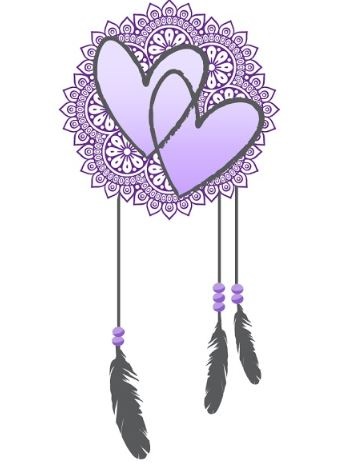I can not tell you how many times I have heard this excuse when it comes to doing yoga. “I can’t do yoga, I’m not flexible”. I will always come back with the answer, “that’s why you should do yoga”. Yoga is a practice of consistency and dedication. I am here to tell you there is no prerequisite, no requirement to be flexible in order to do yoga. Face it, are not all naturally flexible, and contrary to belief, it us something that comes with…you guessed it, PRACTICE! Yoga is not about flexibility, it is a practice that has several benefits on the mind, body, and spirit level. However, many seem to think of flexibility as a thing connected to yoga. I get the question all the time, “how can I get into a split?” or “how can I become more flexible?”. Although, I am always more interested in giving you a more in-depth overview of the benefits of yoga to your everyday life, that stem far and beyond physical flexibility (send me a personal message for more), I’m happy to help answer this common question for you.
Many moons ago, before I even knew what yoga was, I stretched and stretched until I could get a split for a dance performance. I listened to my dance teacher tell us daily, that dedicating just a few minutes to stretching every day would get you to the results you wanted for your flexibility to do high battements, leaps, splits, etc. . Little did I know that this idea would translate into something much bigger and would bring me into a yoga studio. I started yoga for this very reason originally, “to get flexible” for dance really, but also to continue to work on the idea of connecting breath with movement for Modern dance in college. But, what I didn’t get at the time is that it evolves around consistent practice and there is so much more in store. Breathing, meditation, mindfulness, connection to inner-self, affirmation of values, cleansing, tension release, profound evolution, growth, and at the very least came the flexibility. I still struggle to find range of motion in some of my muscles, but I continue to rely on the practice to help clear these holding patterns that my body has formed over the years. (i.e. at the ballet barre and tension in the shoulders). Understand hat the combination strengthening and releasing has an influence on flexibility. Its important to know the difference between static stretching and dynamic stretching. “Static stretches are those in which you stand, sit or lie still and hold a single position for period of time, up to about 45 - 60 seconds. Dynamic stretches are active movements where joints and muscles go through a full range of motion. They can be used to help warm up your body before exercising (apta.org)
I say all this to give you a few tips to try at home that will help you bring awareness to your own flexibility, and to encourage you to start an intentional and consistent practice of your own that will help you get to where you are going. These tips will help you, whether you are shooting for a split or just stretching out a muscle that needs extra attention:
Breathe — One thing your muscles will thank you for is taking a deep breath. Instead of straining and holding your breath, take nice deep breaths while you are stretching. This creates a state of relaxation for the muscle and sends the breath to those areas for release. Taking 10-12 breathes with any stretch, especially through the hamstrings, is a good start.
Be consistent — The key about practicing anything is to be consistent. You will achieve your results more effectively and efficiently with consistency. Even if it is for just one minute a day, allow your muscles to release. The best time to stretch is in the early morning, before starting your day. It sets the length of the muscles for the remainder of the day, allowing you to move more freely without restriction. But here's a secret — there’s nothing like stretching before going to bed also. Static stretching will sustain the flexibility earned from a prior workout or daily activity, and the nighttime sessions release tension built up from your busy day by signaling your body to shut down for the night, helping you fall into a deep, regenerative sleep. Sweet dreams!
Approach from a new place — Often we try to force a muscle to stretch and this is no good, often resulting in overstretching or straining. For example, we often think of stretching a split by getting into a split, but you can also stretch your hamstrings while lying on your back and using a strap. This takes the pressure off of the muscle by removing the weight from your body and allows for a deep stretch that you have more control over. For opening the hips, instead of straining over top of a straddle, try lying on your back and placing your legs up a wall, then allow gravity to naturally bring the legs to a straddle gently. Its less force on getting down to the ground, and allows more room for re-positioning, bending the legs, etc.
Adjust & Fidget— Allow yourself to adjust, move around, and find a comfortable place to increase the stretch. For example, with stretching the hamstrings, allow movement in the ankle by rocking back and forth or circling the ankle to allow some give. Allow for a microbend in the the joints to loosen up tension and fascia. It’s ok to come out of the stretch, release, then come back into it. You might find a deeper stretch this way.
Roll out— “Foam rolling is a self-myofascial release (SMR) technique. It can help relieve muscle tightness, soreness, and inflammation, and increase your joint range of motion” (healthline.com). Many find foam rolling to be an effective tool to add to your warm-up or cool-down, before and after exercise. I find using it after a workout allows me to really get into the gooey-ness of my muscles. I find that it releases the most tension in my quads, which tend to be tight from years of ballet. Different size rollers can be used for different parts of the body. You might find a small hand-held roller or even a tennis ball to be suitable for neck and back, while a bit bulky roller can be used on the hamstrings and glutes. Roll that tension right out of your body with a roller.
Please let me know if any of these tips are working for you. My intention is to start a video blog soon to actually show you some of these stretches and movements. Feel free to comment below if that would be helpful for you.
Hope you find some maxin’ and relaxin’ through your muscles and find that flexibility through consistent practice.
Happy stretching! ;) -Lee-Ann






